| __timestamp | Parker-Hannifin Corporation | Thomson Reuters Corporation |
|---|---|---|
| Wednesday, January 1, 2014 | 10188227000 | 9209000000 |
| Thursday, January 1, 2015 | 9655245000 | 8810000000 |
| Friday, January 1, 2016 | 8823384000 | 8232000000 |
| Sunday, January 1, 2017 | 9188962000 | 8079000000 |
| Monday, January 1, 2018 | 10762841000 | 4131000000 |
| Tuesday, January 1, 2019 | 10703484000 | 2431000000 |
| Wednesday, January 1, 2020 | 10286518000 | 2269000000 |
| Friday, January 1, 2021 | 10449680000 | 2478000000 |
| Saturday, January 1, 2022 | 11387267000 | 2408000000 |
| Sunday, January 1, 2023 | 12635892000 | 4095000000 |
| Monday, January 1, 2024 | 12801816000 |
Unlocking the unknown
In the ever-evolving landscape of industrial and information sectors, Parker-Hannifin Corporation and Thomson Reuters Corporation stand as titans. From 2014 to 2023, Parker-Hannifin's cost of revenue surged by approximately 26%, peaking at 12.6 billion in 2023. In contrast, Thomson Reuters experienced a dramatic decline, with costs plummeting by nearly 75% from 2014 to 2022, before a slight recovery in 2023.
Parker-Hannifin's consistent growth reflects its robust operational strategies, while Thomson Reuters' fluctuating costs highlight its strategic shifts in the information services sector. Notably, the absence of data for Thomson Reuters in 2024 suggests a potential restructuring or strategic pivot.
This comparison underscores the importance of cost management in maintaining competitive advantage. As industries evolve, these insights offer valuable lessons in efficiency and adaptability.
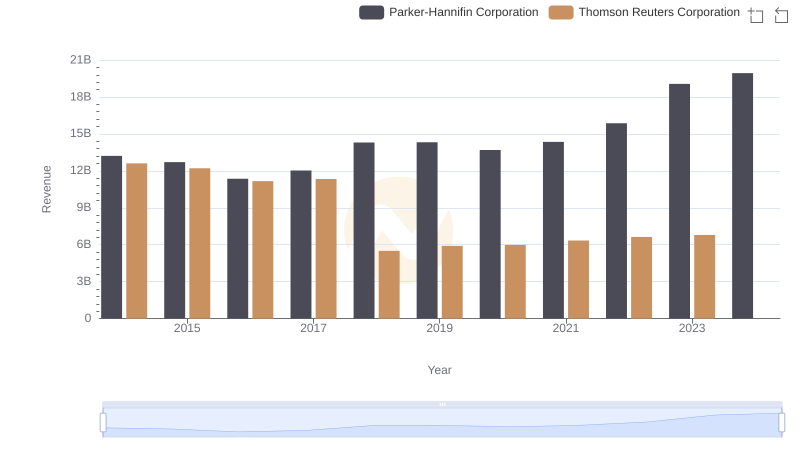
Breaking Down Revenue Trends: Parker-Hannifin Corporation vs Thomson Reuters Corporation
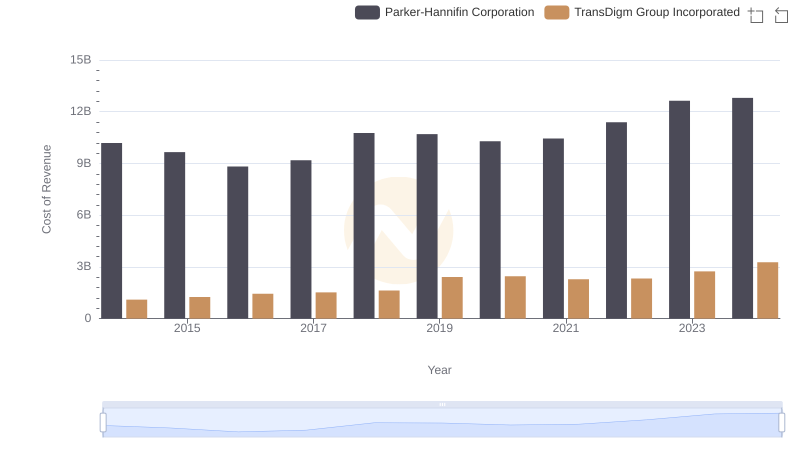
Analyzing Cost of Revenue: Parker-Hannifin Corporation and TransDigm Group Incorporated
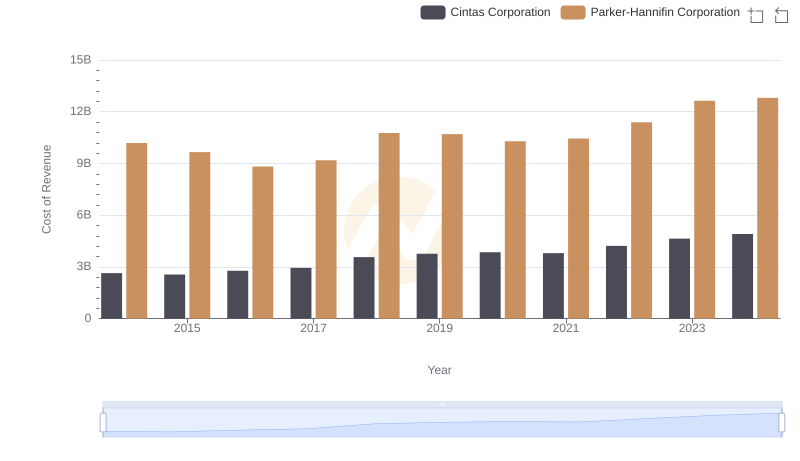
Cost Insights: Breaking Down Parker-Hannifin Corporation and Cintas Corporation's Expenses
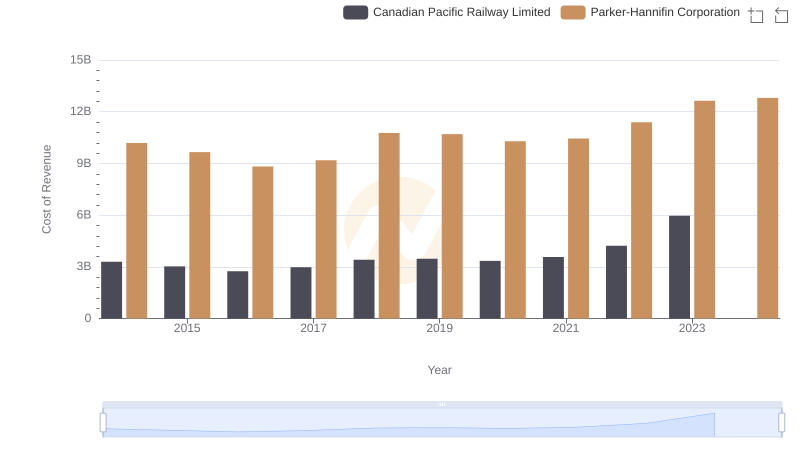
Cost of Revenue Trends: Parker-Hannifin Corporation vs Canadian Pacific Railway Limited
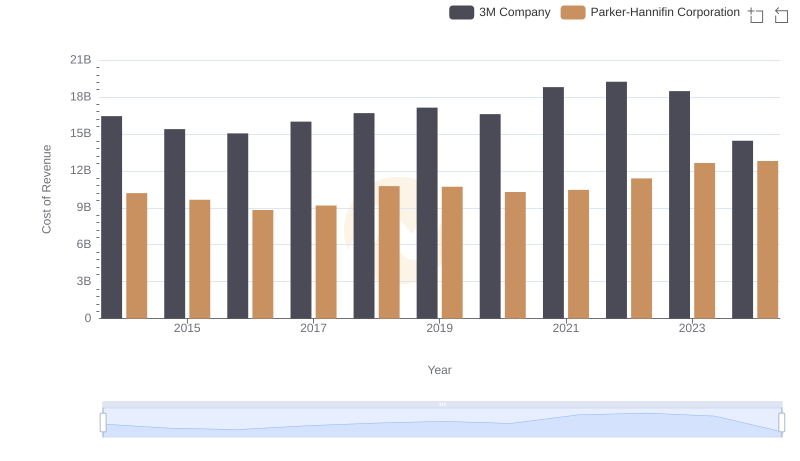
Parker-Hannifin Corporation vs 3M Company: Efficiency in Cost of Revenue Explored

Cost of Revenue Trends: Parker-Hannifin Corporation vs Illinois Tool Works Inc.
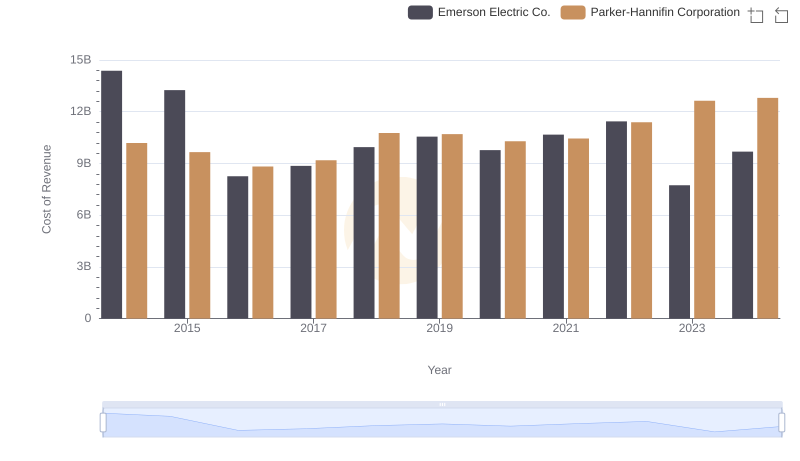
Comparing Cost of Revenue Efficiency: Parker-Hannifin Corporation vs Emerson Electric Co.
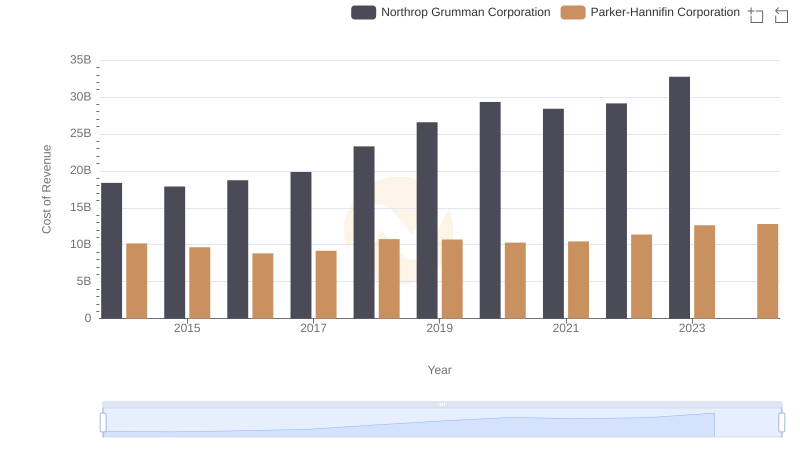
Cost Insights: Breaking Down Parker-Hannifin Corporation and Northrop Grumman Corporation's Expenses
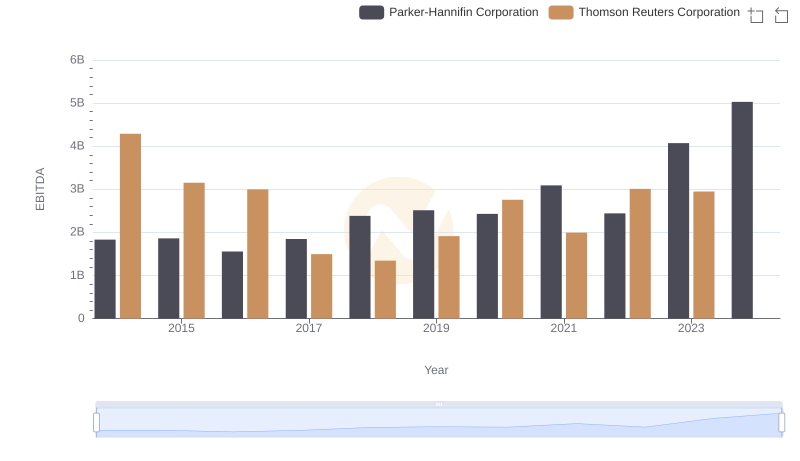
Parker-Hannifin Corporation vs Thomson Reuters Corporation: In-Depth EBITDA Performance Comparison